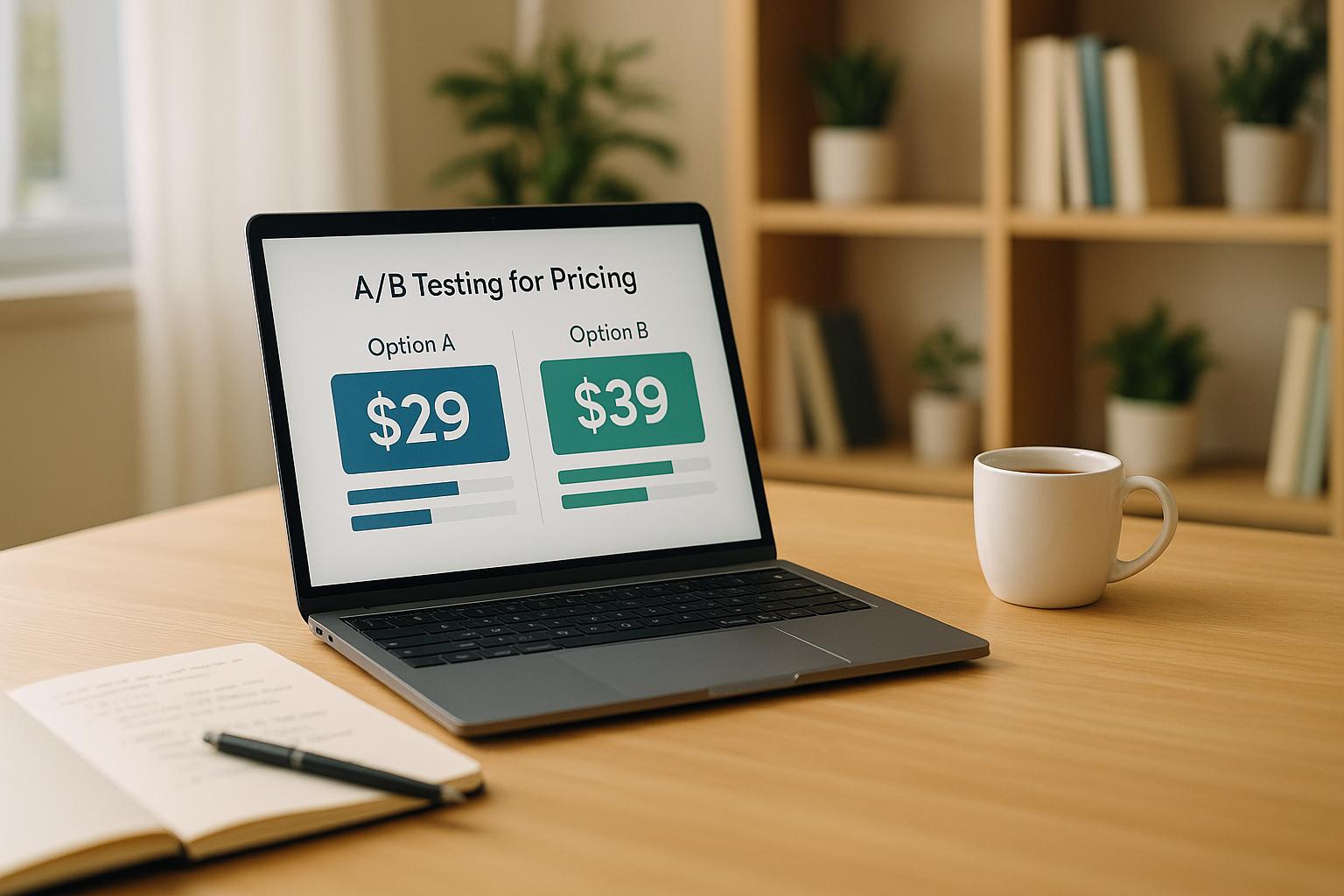BYOD (Bring Your Own Device) policies are convenient, but they come with security risks. Here's what businesses and employees must focus on to protect sensitive data while using personal devices for work:
Key Takeaways:
- Top Risks: Data leakage (72%), malware (52%), and phishing attacks (82% involve human error).
- Employee Training: Regular sessions on password safety, phishing defense, and incident reporting.
- Technical Measures: Use Mobile Device Management (MDM) tools, encryption, VPNs, and Zero Trust security.
- Password Rules: Strong, unique passwords (12-16 characters) and multi-factor authentication (MFA).
- Device Security: Enable encryption, remote wipe, and device registration with IT.
Quick Tips:
- Use a password manager to avoid reusing passwords.
- Always connect to secure Wi-Fi or a VPN.
- Verify suspicious emails to avoid phishing scams.
- Regularly update your device's software and apps.
Proactive security measures and employee awareness are essential for safe BYOD implementation. Read on for detailed strategies and tools to protect your workplace.
Security Fundamentals for BYOD
Password Safety Rules
A strong password is your first line of defense in protecting your digital life. Consider this: an 8-character password can be cracked in minutes, but a 16-character password can withstand brute force attacks for years.
"Passwords are the keys to safeguarding your digital and online life. They are your first line of defense." - National Cybersecurity Alliance
Here’s how to ensure your passwords are as secure as possible:
| Password Requirement | Implementation Guide |
|---|---|
| Length | Use at least 12-16 characters. |
| Complexity | Include a mix of uppercase letters, lowercase letters, numbers, and symbols. |
| Uniqueness | Avoid reusing passwords across different accounts. |
| Management | Use a trusted password manager like LastPass, 1Password, or Dashlane. |
| Authentication | Always enable multi-factor authentication (MFA) for an extra layer of security. |
While strong passwords are crucial, securing the physical device is just as important.
Device Protection Steps
Did you know that 50% of companies have experienced data breaches due to employee-owned devices? This makes it critical to secure both the hardware and software of personal devices used for work. Here are some essential measures:
| Security Measure | Purpose | Implementation |
|---|---|---|
| Device Registration | Keep track of approved devices. | Register personal devices with your IT department. |
| Encryption | Protect sensitive data stored on devices. | Enable full-disk encryption. |
| Remote Control | Handle lost or stolen devices effectively. | Install remote wipe capabilities. |
| Access Control | Minimize data exposure. | Apply the least privilege principle to limit access. |
| Network Security | Ensure secure connections when working remotely. | Use a VPN for all remote access. |
These steps help reduce vulnerabilities and protect sensitive company information on personal devices.
Phishing Defense Guide
Even with strong passwords and device security, phishing attacks remain a major concern. In 2022, over half of personal devices faced mobile phishing attempts each quarter, and 82% of cyber breaches were tied to human error or interaction. To combat phishing, keep these strategies in mind:
| Warning Sign | Recommended Action |
|---|---|
| Urgent Requests | Pause and verify the sender’s identity before responding. |
| Suspicious Links | Long-press the link to preview the URL before clicking. |
| Unknown Senders | Confirm the sender’s identity using an alternate communication method. |
| Generic Greetings | Check for inconsistencies in the sender’s email domain. |
| Attachment Requests | Contact the sender directly to verify the request. |
If you suspect a phishing attempt, report it immediately. Remember, Microsoft has found that enabling two-factor authentication can block over 99% of automated attacks. Taking these precautions can significantly reduce your risk of falling victim to phishing schemes.
BYOD Security Best Practices
Technical Security Controls
Strengthening BYOD security requires advanced technical measures built upon solid foundational practices.
Mobile Device Management Tools
Effective Mobile Device Management (MDM) tools are a cornerstone of BYOD security. With 45% of organizations experiencing mobile device security incidents that led to data loss or downtime - and 73% facing significant consequences - MDM solutions are more crucial than ever.
| MDM Feature | Security Benefit | Setup |
|---|---|---|
| Device Tracking | Locate lost or stolen devices | Automatic GPS tracking and status updates |
| Remote Control | Protect corporate data | IT-managed remote lock and selective wipe |
| App Management | Prevent malware threats | Control app installations and block unauthorized software |
| Policy Enforcement | Ensure compliance | Automated PIN requirements and security configurations |
| Workspace Isolation | Safeguard corporate information | Separate personal and corporate environments |
"MDM enables locking, locating, and sometimes wiping devices that have been lost, and in some cases, initiating that process automatically." - Enterprise Security Magazine
MDM tools ensure device security, but encryption plays a critical role in protecting sensitive data, whether stored on the device or transmitted.
Data Encryption Methods
Encryption is another essential layer of protection, securing data throughout its lifecycle. The growing BYOD trend demands advanced encryption methods to mitigate risks. The 2017 Equifax breach, which exposed the personal data of 150 million users due to weak encryption, highlights the consequences of neglecting this aspect.
| Encryption Type | Use Case | Security Level |
|---|---|---|
| Full-disk (FDE) | Protects the entire device | Highest |
| File-level (FLE) | Encrypts specific files | High |
| End-to-end (E2EE) | Secures data in transit | Maximum |
| Transport Layer Security | Safeguards network communication | Essential |
"To ensure protection, organizations need to implement encryption for the entire duration of the data lifecycle (in-transit and at-rest). And to prevent unauthorized access and maintain the encryption in case of a security breach, the IT department of the concerned organization should take control of encryption keys." - InfoSec Institute
Encryption serves as a vital complement to network security measures, ensuring comprehensive protection.
Network Security Rules
With 22% of businesses reporting employees connecting to malicious Wi-Fi networks, strict network security protocols are non-negotiable. Organizations must enforce VPN usage and adopt secure connection practices to safeguard data.
| Network Security Measure | Purpose | Required Action |
|---|---|---|
| VPN Usage | Encrypts data transmission | Mandatory for remote access |
| Wi-Fi Security | Blocks unauthorized access | Connect only to encrypted networks |
| Access Control | Protects sensitive resources | Enforce policy-based authentication |
| Connection Monitoring | Tracks network activity | Regularly review and analyze connections |
Policy-based access control ensures employees interact with sensitive data only through secure corporate VPNs. These measures, combined with encryption and MDM tools, create a robust defense for BYOD environments.
sbb-itb-97f6a47
Building Security Awareness
Building a strong sense of security awareness among employees is essential for a successful BYOD (Bring Your Own Device) strategy. With a staggering 82% of data breaches involving human error, organizations must prioritize ongoing training programs to safeguard sensitive data and critical systems.
Training Schedule and Updates
While technical measures are crucial, consistent training helps employees recognize and mitigate risks effectively. Research indicates that well-structured awareness programs can reduce the likelihood of employees falling for phishing attempts from 60% to just 10% within a year.
| Training Component | Frequency | Focus Areas |
|---|---|---|
| Core Security Training | Quarterly | Policy updates, evolving threats |
| Interactive Sessions | Monthly | Hands-on exercises, simulations |
| Security Bulletins | Weekly | Updates on new threats, practical tips |
| Phishing Tests | Bi-monthly | Real-world scenario practice |
"Many organizations employing a comprehensive cyber security awareness program combine quarterly awareness training activities with monthly touch points featuring short activities, games, and cyber challenges to effectively educate their users about the evolving landscape of cyber security risks." - Theo Zafirakos, CISO, Professional Services Lead at Terranova Security
These regular training efforts not only help employees prevent breaches but also prepare them to respond effectively when incidents occur.
Security Incident Steps
In the event of a security incident, employees should avoid investigating or attempting to resolve the issue on their own. A prompt and well-coordinated response is critical to minimize damage.
| Phase | Actions Required |
|---|---|
| Immediate Response | Disconnect from networks and isolate the affected device |
| Initial Report | Notify the IT security team using the designated reporting channels |
| Account Security | Update compromised passwords and review account settings |
| Documentation | Record key details about the incident and steps taken |
"It is important that actual or suspected security incidents are reported as early as possible so that campus can limit the damage and cost of recovery." - Information Security Office, UC Berkeley
The success of an incident response plan hinges on employee readiness, highlighting the importance of continuous training and awareness programs.
High-Level Security Measures
To bolster the earlier technical controls, these advanced measures add another layer of protection to BYOD (Bring Your Own Device) environments. With BYOD adoption at 82% and a breach rate of 68%, implementing robust security protocols is no longer optional - it's critical to safeguarding sensitive data.
Zero Trust Security Setup
Zero Trust security flips the old perimeter-based approach on its head. Instead of assuming everything inside the network is safe, this model treats all devices, including personal ones, as potential threats. It requires constant verification for every access attempt, no matter the source.
| Security Component | Implementation Requirements | Key Benefits |
|---|---|---|
| Device Verification | Multi-factor authentication, device fingerprinting | Prevents unauthorized access |
| Access Controls | Role-based permissions, least privilege principle | Limits data exposure |
| Network Security | Zero Trust Network Access (ZTNA), segmentation | Shrinks the attack surface |
| Cloud Protection | Cloud Access Security Broker (CASB) integration | Secures cloud app usage |
"Zero trust is a response to enterprise network trends that include remote users, bring your own device (BYOD), and cloud-based assets that are not located within an enterprise owned network boundary." - NIST SP 800-207
To make Zero Trust work effectively, enforce strict policies like mandatory passcodes, up-to-date antivirus software, automatic patch updates, and continuous encryption of sensitive data. These measures work hand-in-hand with advanced threat detection systems to create a fortified defense.
Threat Detection Systems
Advanced Threat Protection (ATP) solutions are essential for identifying and mitigating cyber threats. With 63% of businesses citing data loss as a top BYOD security concern, investing in sophisticated threat detection tools is a must.
AI and machine learning technologies enhance these systems by:
- Monitoring device behavior in real time
- Detecting suspicious activities
- Predicting potential threats
- Automating responses to incidents
| Threat Protection Layer | Monitoring Focus | Action Taken |
|---|---|---|
| Application Security | App behavior analysis | Blocks harmful applications |
| Network Protection | Traffic monitoring | Stops unauthorized access |
| Device Security | System integrity checks | Isolates compromised devices |
| Data Protection | Information flow tracking | Prevents data leaks |
"Mobile threat detection remains an essential cyber security function as bring your own device (BYOD) policies evolve and the hybrid workplace puts added pressure on mobile device management." - Gary Hilson
When combined with Mobile Device Management (MDM) tools, these systems provide unparalleled oversight and control over BYOD environments. They enable organizations to automatically detect and respond to security incidents, minimizing the chances of data breaches and ensuring compliance with established security policies.
Summary and Next Steps
To bolster your BYOD (Bring Your Own Device) security, it's crucial to focus on a few key areas. Here's a quick breakdown of the priorities that form the backbone of a secure BYOD environment:
| Priority Area | Requirements | Steps |
|---|---|---|
| Employee Training | Security awareness, phishing defense, password management | Regular updates, hands-on exercises, incident reporting |
| Technical Controls | Mobile Device Management (MDM) solutions, encryption, threat detection | Deploy security tools, monitor compliance, enforce policies |
| Policy Framework | Usage guidelines, security requirements, responsibilities | Document procedures, obtain acknowledgments, review quarterly |
Organizations face significant risks, including data leakage (72%) and malware threats (52%). To address these challenges, here’s a roadmap for strengthening your BYOD security setup:
-
Establish Baseline Security
Start with the basics: enforce strong password policies, ensure regular operating system updates, and create an approved app list. These steps can help close common security gaps. -
Enforce Advanced Protection
Invest in MDM solutions and Data Loss Prevention (DLP) tools to protect corporate data on personal devices. These tools help secure sensitive information while maintaining usability. For tailored strategies, consider consulting experts listed in the Top Consulting Firms Directory."BYOD security is a broad term that encompasses everything your organization does to keep company data safe on personal devices. Implementing policies for appropriate device usage, installing apps to scan for malware, and educating employees about potential security risks are all part of a comprehensive BYOD program."
-
Seek Expert Guidance
Create a security program that covers everything from policy development to deploying technical controls. A well-rounded approach ensures no aspect is overlooked."User education is central to any successful BYOD policy. By communicating a comprehensive BYOD policy to your employees and educating them on cybersecurity best practices, you can reap the advantages of your BYOD policy without risk to your company data or cybersecurity."
With 95% of cyberattacks targeting unpatched vulnerabilities, staying proactive is non-negotiable. By implementing these measures, you can protect corporate data effectively while enjoying the flexibility and benefits of BYOD. Don't wait - take action now to secure your BYOD environment.
FAQs
How can businesses create a secure BYOD policy for employees?
To establish a secure Bring Your Own Device (BYOD) policy, businesses need to focus on setting clear expectations and implementing strong security practices. Start by defining what constitutes acceptable device usage and clearly outlining rules for protecting company data.
Employee training plays a key role here. Make sure everyone knows how to create strong passwords, identify phishing scams, and handle sensitive information responsibly.
Leverage tools like mobile device management (MDM) to keep tabs on and secure devices connecting to company systems. Add an extra layer of protection with technical measures such as VPNs for secure access, encryption for sensitive data, and remote wipe options to erase data if a device is lost or stolen.
Lastly, don’t let your BYOD policy become outdated. Regularly revisit and revise it to stay ahead of new security threats and evolving technology. By blending proactive strategies with open communication, businesses can embrace BYOD without compromising their data security.
How can employees be effectively trained to understand and prevent BYOD security risks?
To help employees understand the security risks tied to BYOD (Bring Your Own Device), organizations need to emphasize clear communication and engaging training methods. Start by creating straightforward BYOD policies that outline acceptable use, strong password requirements, and steps for safeguarding sensitive data. These guidelines should be easy to follow and consistently reinforced through training sessions.
Using interactive approaches like workshops and simulations can make the learning process more impactful. For instance, hands-on activities that mimic phishing scams or data breaches can demonstrate the real-life effects of ignoring security measures. Keeping employees informed about new threats through regular updates ensures they remain alert and proactive.
Building a workplace culture that prioritizes security awareness, combined with continuous education, can greatly reduce the risks tied to using personal devices on the job.
How do Mobile Device Management (MDM) tools improve BYOD security?
Mobile Device Management (MDM) tools are essential for keeping BYOD (Bring Your Own Device) environments secure. They allow organizations to enforce security policies, control access, and protect sensitive data. One of their key features is the ability to remotely erase corporate information from lost or stolen devices, ensuring private data stays out of the wrong hands.
Another advantage of MDM solutions is their ability to maintain compliance with security standards while separating personal and work data through containerization. This approach minimizes the chances of unauthorized access, data breaches, or accidental leaks of corporate information. For businesses embracing BYOD, MDM tools are a must-have to ensure both security and efficiency.


